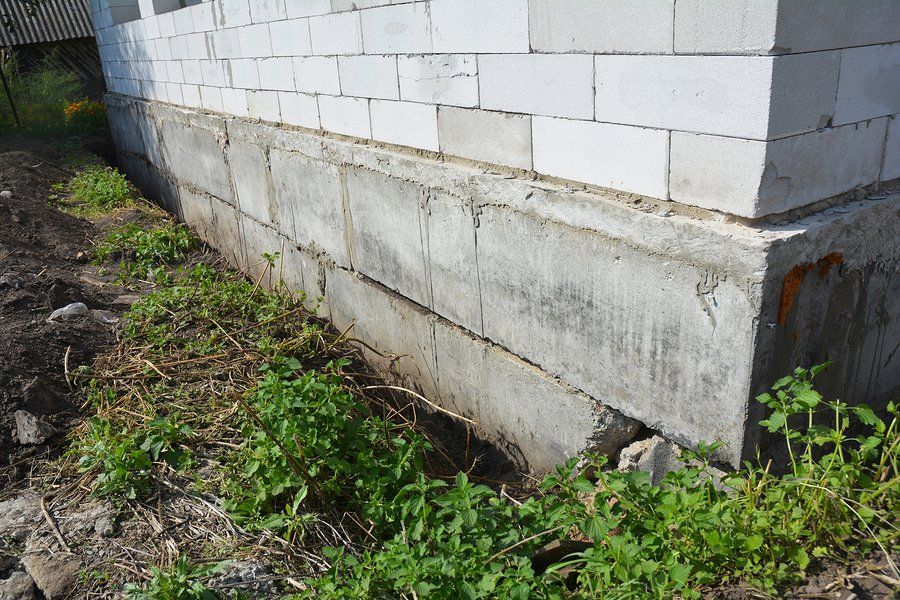Moreno Valley Foundation Crack Repair Experts
Causes of Cracks in Foundations
Foundation cracks can develop due to a variety of reasons. One of the primary causes of cracks is soil movement beneath your home. As the soil expands and contracts due to weather changes, it places stress on the concrete foundation. Poor drainage systems or excessive moisture can also contribute to foundation cracks, leading to the need for foundation repairs. In some cases, poor construction practices can result in foundation problems that worsen over time. Identifying the cause early is critical for effective concrete repair and ensuring the stability of your home.
Foundation Repair Methods
When it comes to foundation crack repair, there are several effective methods available depending on the severity and type of crack. For minor foundation cracks, concrete foundation crack repair using epoxy injections can seal the cracks and prevent water from seeping through. In cases where there are larger cracks or shifting, professional foundation wall repair may be necessary, which involves reinforcing the foundation with steel piers or wall anchors. These methods help stabilize the structure and fix foundation cracks before they lead to more significant foundation problems. It's essential to choose the right concrete foundation repair method to ensure the longevity of your home's foundation.
Carbon Fiber Foundation Crack Repair
Foundations are a vital part of any structure. They provide structural support and act as a barrier between the earth and the outer layers of the soil. Because foundations are important, it's important that they are well-maintained. Foundation repair services ensure this is the case by repairing damaged and worn foundations. Unfortunately, wear and tear are inevitable, and sometimes, even with repairs, cracks still don't close correctly.
Unfortunately, no matter how much money or effort you put into the house foundation repair, there will always be a chance that something may go wrong. If a slab of concrete fails to properly apply across an abnormally long span or if the decking or exterior beams are rotten, then it's possible your foundation will fail as well. Unfortunately, restoring your foundation can be tricky because it takes a trained eye to know what type of holes to fix and how to fill them without creating a larger hole. In addition, foundation problems don't happen overnight, so if you discover a problem after the fact it's more difficult to make any changes.
For new homes in Moreno Valley, commercial buildings, and other structures, foundation repair professionals use specialized equipment to determine the integrity of the foundation. In many cases, cracks and leaks will be easy to identify on a map of the property or from photos. Foundation piers are used to channel groundwater away from the foundation. These piers are typically made out of steel, but concrete piers are also used. Both types of piers are used for different reasons.
Concrete piers are used when there is foundation trouble because the ground can't be dug enough to safely bury the pipes under. As a result, water has to drain away from the foundation. When a foundation crack or other issue causes water to seep into the walls or floors, this will cause foundation problems that can become very expensive to fix.
Call us today at 951-221-5882.

What should you do before starting with Carbon Fiber Crack Repair?
Before starting the carbon fiber crack repair, make sure that the damaged area is properly cleaned. This is an important step as improper cleaning will result in poor performance. Wiping the area with a cloth will not do. Use only epoxy cleaners as these are designed for the job. The best product to use when cleaning the cracks in the carbon fiber fabric is the polyurethane-based product. They are highly effective in removing the organic debris, soil, and moisture from the cracks.
After properly cleaning the area, prepare the surface by clearing all cobwebs and dirt using a wet vacuum. Then, apply at least five to ten pounds of the polyurethane-based acrylic additive. Ensure that all surfaces are completely dry before moving on to the next stage. For this, the crack repairs are done using the drywall injection method. This injection method ensures that the cracks are filled in their entirety and that no air pockets are left.
The next step of the carbon fiber crack repair process is to apply either an epoxy or a resin mixture onto the affected surface. Epoxy resin is usually used when repairing larger cracks while the resin is recommended for smaller cracks. The resin is capable of curing faster than epoxy. However, it takes approximately five to ten minutes for the resin to cure. When the resin cures, be sure to wait for it to harden thoroughly before applying the topcoat or finishing.
After curing, you can apply either an epoxy or a resin mixture onto the affected areas. Ensure that the areas that need coatings are completely smooth and flat. For this, use a wet vacuum and apply the carbon fiber reinforcement directly onto the wall surfaces. Once this is done, ensure that the areas are smooth and flat using a saw.
What are the things you need to remember before proceeding with Carbon Fiber Crack Repair?
One of the most important things to remember about carbon fiber crack repair is that it is not only about repairing cracks. If there are any other damages on the foundation walls, structural bricks, or concrete, they should also be addressed. If the damage is severe, a foundation repair may be required. Other than this, there is no other major issue with the foundation walls. Therefore, they can be ignored during the initial stage of the repair process. There are many types of carbon fiber crack repair methods available. It depends upon the severity of the crack and its location. For example, the method that is used for smaller cracks may be different from the one that is used for larger cracks.
Common methods of Carbon Fiber Crack Repair
Some of the common carbon fiber crack repair methods include concrete wall reinforcement, Kevlar fiber grid straps, pressure injection, thermoforming, and many others. These methods differ in the manner of application. In concrete wall reinforcement, steel bars are used and once these are embedded into the cracks, concrete will soon be pumped through the holes. This will form a kind of masonry wall. If the cracks in the Kevlar fiber grid straps are small, they will be filled in by drilling and cementing while pressure is applied with the help of a blowtorch.
The process of pressure injection starts when the concrete is being forced inside the crack using a hammer and then after it has been done, the cracked area is filled in using a very strong yet soft and pliable Kevlar fiber grid strap. If the damage is of a very high magnitude then the entire building can be supported by this carbon fiber crack repair material. The Kevlar fiber grid straps and the concrete pieces used for this application are tough and very tough to install. If the damage caused due to a crack in the concrete walls is very large, then even the traditional methods of repairing the damage will not be able to repair it. Even traditional methods like welding and hammering will not be able to handle such situations. If you are in of crack repair services, get in touch with us today so we can provide you with the best solutions!
Discover how to take your business to the next level by exploring our blog, where we cover the latest innovations, technology trends, and success stories that can inspire and guide your growth.
How can I prevent foundation cracks?
Regular maintenance is key. Ensure your drainage system is working correctly, and check for signs of moisture buildup near the foundation. If you notice minor cracks, address them quickly with professional concrete foundation crack repair to prevent worsening.
How serious are foundation cracks?
While some small cracks are natural as concrete settles, larger cracks can indicate severe foundation problems. Contact a professional for an inspection to determine if foundation repairs are necessary.
Can I repair foundation cracks myself?
Small, hairline cracks can sometimes be sealed with store-bought solutions. However, for deeper or more significant cracks, it's best to consult a professional for proper foundation crack repair to ensure long-term results.
What is the cost of concrete foundation repair?
The cost varies depending on the extent of the damage and the chosen repair method. Minor concrete repair costs less, while more involved foundation wall repair may require a larger investment.



